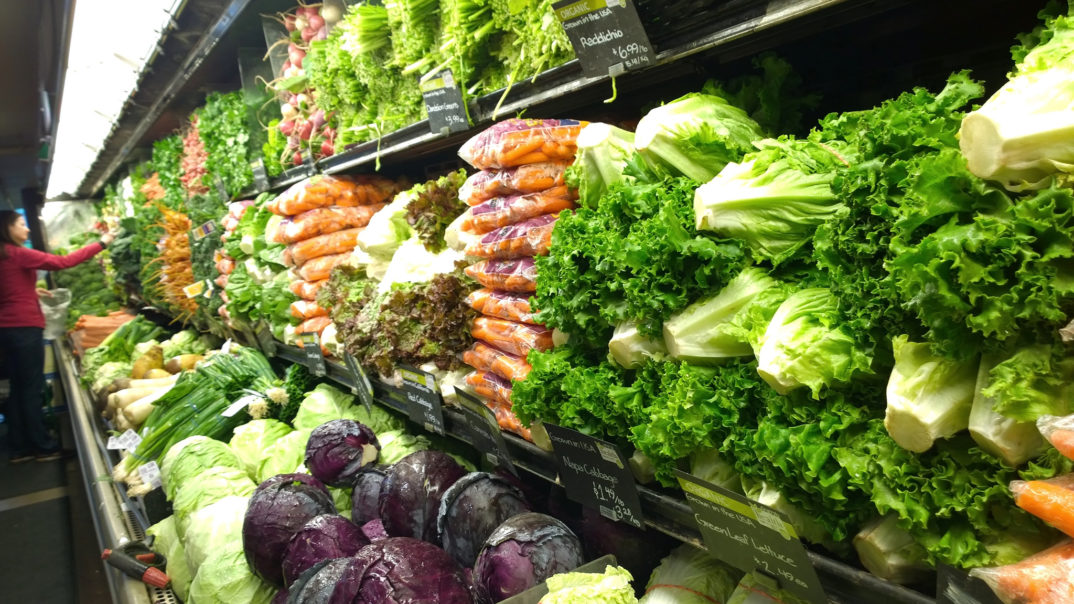Earth Day, Lettuce Shortages, and Future Food Crises
This year’s Earth Day fell on a Sunday, and thousands of families across the United States celebrated the planet by participating in local festivals or visiting state parks. 2018’s Earth Day theme was End Plastic Pollution and highlighted the current plastic crisis in the world’s oceans. Numerous events fell in line with this year’s theme, ranging from horrific to hopeful. Weeks before Earth Day, a sperm whale washed up on a beach in Spain. The whale died from ingesting over 64 pounds of ocean plastic. Then, closer to Earth Day, scientists stumbled across a strain of bacteria that attacks and ingests a type of plastic used in most plastic consumer items, a bacteria that The Guardian has called a hopeful “ally against plastic.” This year’s Earth Day was overall a success and hopefully jump-started local campaigns across the country to end plastic waste.
If only Earth Day could have multiple themes. Flint’s water crisis is still affecting thousands of children in the area. Despite continuing concerns among many parents in the area, Michigan is ending Flint’s free bottled water program. Children continue to go to school with high levels of lead in the water, and most of Flint’s lead water pipes haven’t been replaced yet. Along with water scares, tons of pounds of romaine lettuce are being recalled across the country. Over 60 people have gotten sick from the E. coli outbreak in over 8,000 pounds of lettuce sent to almost half of U.S. states. Grocery stores across America have blank shelves where lettuce should be, and thousands of restaurants and fast-food places are not serving romaine lettuce until the outbreak is contained.
James Hamblin from The Atlantic clearly articulated the “salad panic” paradox. The dangers of eating lettuce, even when pounds are infected with a deadly strain of E. coli, is still considerably less than the dangers of increasingly resistant strains of influenza or the pollution coming from car exhaust every day. But since the romaine outbreak impacts people in their own backyard, it generates more fear and attention than more distant, but just as serious, dilemmas. In reality, the romaine outbreak represents a small blip in a set of larger and more complex problems like food and water shortages. But since local restaurants aren’t serving salad, and grocery stores have blank shelves, the problem feels more visceral and immediate. Hamblin asks readers to consider “how we’re allocating our own attentions and fears.” If anything positive comes out of the romaine E. coli outbreak, it would be increased attention on what the romaine crisis represents: a potential widespread food crisis.
The romaine E. coli outbreak reminds us how sensitive crops are to disease. Currently, only 12 crops represent 75 percent of calorie intake across the world. Climate change could potentially create new pests or pathogens, ones that are more resistant to pesticides or antibiotics. New pathogens that target one of these 12 crops could quickly thrust the world into a food crisis. Although the romaine E. coli outbreak is relatively small, it represents a visceral and frightening reminder that our food supply depends on a fragile system that could be grossly disrupted by a single pathogen. However, steps are being currently taken to prevent a future food crisis, including the development of different protein sources.
Since the emissions from meat production are a contributing factor to rising global temperatures, “meatless meats” are being considered the future of food. Although public perception of “test tube meat” is poor, Richard Deverell, director of Britain’s Royal Botanic Gardens at Kew, argues that GM (genetic modification) is unfairly criticized. Deverell argues, “It’s often alleged that GM is not natural. Well, orthodox agriculture is not natural, it’s extremely damaging to the environment.” Ikea, a Swedish store with world-famous Swedish meatballs, is also experimenting with meatless meats. Ikea’s innovation research lab in Copenhagen is creating meatballs that use mealworms instead of beef. Ikea’s new dishes, Crispy Bug Balls and Bug Burgers, will be more environmentally sustainable and draw from traditions in many countries that incorporate insects as a protein source. These are only two examples of innovations that could prevent a global food crisis and help decrease carbon emissions into the atmosphere.
Although Earth Day’s theme was Ending Plastic Pollution, other crises around the world, including Flint’s continued water crisis and the romaine E. coli outbreak, teach us that Earth Day is about much more than planting trees and local festivals. The romaine E. coli outbreak is a reminder that food shortages represent a serious threat on both local and global levels. To help curb methane emissions during meat productions, Americans can spend make every day Earth Day by eating meat fewer times a week, and being open to trying new innovations that use meat substitutes.





